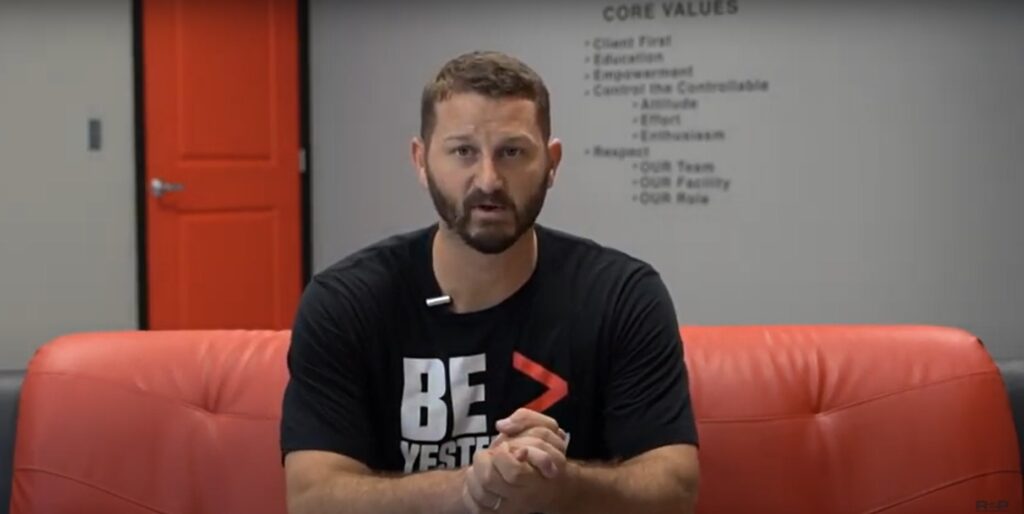Preparing Clients for Change of Direction
Preparing for Lateral Locomotive Patterns and Change of Direction This post will be detailing how to move from linear to lateral locomotor tasks in a rehab program. Initiating linear jogging following an injury or as part of a post-operative rehab protocol has fairly definitive benchmarks for when this is appropriate. They are as follows. Enough time…
5 Questions when Returning an Athlete to Competition
5 Simple Questions You Should Ask When Returning An Athlete To Competition… This is not an exhaustive list, be mindful of orthopedic, physical and psychological factors when returning to competition and do your best to provide information for the patient to accurately work with…. Dr. Baker weighs in… View this post on Instagram …
Stress the Tissues
Thoughts from: Jarred Boyd, PT, DPT, MSAT, SCS, CSCS | Director of Rehab, Memphis Grizzlies One potential reason behind intentionally stressing tissues (particularly subsequent macroscopic insult) is to facilitate – Performance Potential via an augmentation of material + mechanical + morphological + neural ingredients of the neuromuscular apparatus. These adaptations may amplify the relevant constituents…
Buckets of Needs
Thoughts from: Jarred Boyd, PT, DPT, MSAT, SCS, CSCS | Director of Rehab, Memphis Grizzlies I am sure people have seen various versions of the Venn diagram with organism, task and environment that illustrates how movement is an emergent and dynamically influenced phenomenon – contingent on a confluence of variables over varying time scales. However,…
Research may be the Speed Bump we Need
Thoughts from: Jarred Boyd, PT, DPT, MSAT, SCS, CSCS | Director of Rehab, Memphis Grizzlies Slow it down! I view research as cultivating the capacity to maneuver through clinical practice with skeptical inquiry rather than meandering with gullible conjecture It doesn’t provide of us with all we need to know nor does it or should…
Return to Sport Decision Making Considerations
Thoughts from: Dr. Michael Reinhardt, PT, DPT, OCS| Performance Physical Therapist, Resilient PT Is there continued pain, significant alterations in movement strategy, or a considerable fear of re-injury? Research has shown that an athlete’s subjective perception of their current readiness is an important indicator of their ability to return to sport. If an athlete is…
Isolation = Effectiveness
Thoughts from: Jarred Boyd, PT, DPT, MSAT, SCS, CSCS | Director of Rehab, Memphis Grizzlies Isolated means of loading can be effective at fulfilling the intention of increasing the probability of the stimulus reaching the target – like using bumpers when bowling; we are increasing the confidence of more pins being hit Sometimes when directing…
How 2 PT: Loading
How 2 PT: Module 3 Breakdown! After finishing an initial evaluation it’s sometimes difficult to figure out what to prioritize. There are no set rules for this process. However, I’ll submit that there can be general guidelines to your treatment process based on the basic principles of tissue healing times, neurodynamics, kinesiology, physiology and biomechanics. …
Reconditioning Process
Where to stat in the Recondition Process Thoughts from: Jarred Boyd, PT, DPT, MSAT, SCS, CSCS | Director of Rehab, Memphis Grizzlies Where to start in the reconditioning process – kinetics or kinematics (or concurrent intervening) Often I intervene (subsequent to assessment) on the kinetics. In a hierarchy of needs I want to determine if…
Training Methods
Let’s Talk Training Methods Thoughts from: Jarred Boyd, PT, DPT, MSAT, SCS, CSCS | Director of Rehab, Memphis Grizzlies Training specificity refers to using training methods which provide a stimulus to the constituents that serve the physical demands performed in the sport but may not directly and solely imitate the sport itself. If the movements…










